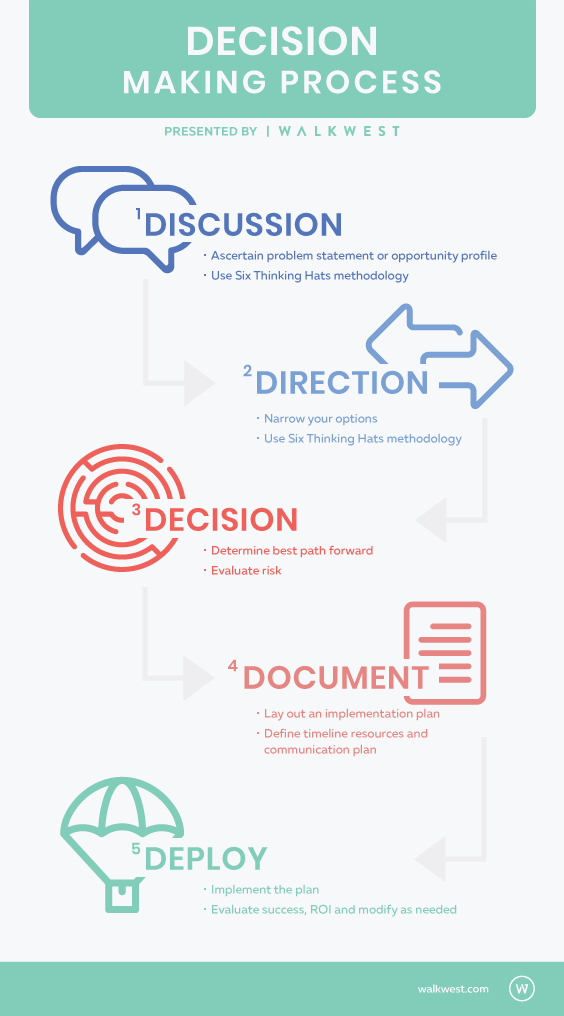
The first is the discussion phase. Let’s use, for example, a new hire for marketing that will work on internal marketing for the firm. You and your team will have a lot of ideas about what that person should do, what their job description should be, etc. You’ll have questions about the professional level of resource you’ll need in the role, and who will handle the hiring process. All of these components are in the discussion phase. It does not mean that you have decided to fund and move forward with the position when you are in these initial conversations but one of the key components is to call out that you are in the discussion phase here because some people could leave that meeting thinking you have made a decision when all you are doing is bouncing around ideas.
In the next phase, you’ll need to pick a direction. A direction simply means we are likely going to move forward with some type of hire. When you are in the direction phase, you then begin to discuss details like timing and investment in this resource, to whom this person reports. You begin to create a plan of attack and assign more specific tasks in the group responsible for the decision. Still, at this point, you have not decided on definitive action, but you are having a more focused dialogue around options. While the discussion phase is to gel concepts, the direction phase is to build out your scenarios. What are the different options you want to choose between? For example, do you want to hire an internal resource or an external agency to handle your internal marketing practice?
Then you move to phase three which is the decision. Whether it is a leadership decision or group decision, the decision must now be made by someone who has the ability to make the call. The decision has outlined a specific path forward, the timing, budget, and all the other parameters around this action. It’s important here to understand that the decision doesn’t actually mean that you are ready to proceed ahead. It just means you have decided. Any decision of consequence with an organization of any size needs to have a rollout plan in order to be implemented effectively.
Phase four is to document your decision. You need to consider several things in this phase. Who are the stakeholders that need to be involved in implementing the decision? Who needs to be communicated with regarding what’s happening and when? Who are the stakeholders whose opinion you want or need to make that decision work? For example, who is your interview team who will weigh in with each candidate or agency to ensure the ultimate success of the decision? Are new or changed processes clearly outlined in writing and prepared to be distributed for reference to your team? How do we best implement this decision so that it meets the goals and objectives that we expect?
Once you have the documentation phase completed, you are now ready to deploy the decision. Be prepared that in deployment, you may have questions, concerns, or even push back. Be prepared with a formal announcement which may include a full team meeting. Open office hours, town halls, or designated resources available can foster your team through major changes. You are now executing against a hire, but you have a plan to do so which then gives you the ability to make a sound decision because you have:
- discussed it,
- looked at multiple options in your direction phase,
- made a deliberate decision in the decision phase,
- documented your plan of attack and then,
- deployed it.
By the time you deploy, typically you have eliminated communication issues, and mistakes by making a poor or rash decision. Finally, you’ve kept all the key stakeholders informed so that you have complete buy-in for deploying the decision with the right amount of energy and enthusiasm, positioning the decision for success.

